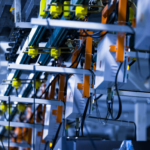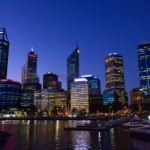Western Australia is rapidly emerging as a key player in renewable energy integration, driven by global sustainability goals, government initiatives, and a growing demand for cleaner energy sources. As the energy landscape evolves, electrical design companies in Australia are presented with unique opportunities to contribute to and benefit from the transition to renewables. This article explores the current state of renewable energy in WA, the challenges of integration, and the opportunities available for electrical design companies to play a pivotal role in this transformative journey.
The Renewable Energy Landscape in WA
Western Australia boasts vast natural resources ideal for renewable energy generation, including abundant sunshine for solar power, strong coastal winds for wind energy, and significant potential for hydrogen production. Recent years have seen the rapid development of large-scale solar farms, wind farms, and off-grid renewable solutions in WA. According to the Australian Energy Market Operator (AEMO), renewable energy capacity in WA’s South West Interconnected System (SWIS) has increased significantly, with renewable sources contributing an increasing share of the energy mix.
Government policies, such as the WA Renewable Hydrogen Strategy and the Distributed Energy Resources Roadmap, aim to diversify energy sources and promote the integration of renewable energy into the grid. These initiatives align with Australia’s broader target of net-zero emissions by 2050 and are supported by investments in infrastructure, research, and development.
Key Challenges in Renewable Energy Integration
While the potential for renewable energy in WA is enormous, the transition is not without challenges. Electrical design companies must navigate several technical and regulatory hurdles to ensure seamless integration into existing energy systems.
Key challenges include:
1. Grid Stability and Reliability
Renewable energy sources like solar and wind are intermittent, which can create fluctuations in energy supply. Ensuring grid stability requires innovative solutions such as battery storage systems, demand response mechanisms, and advanced grid management technologies.
2. Upgrading Legacy Infrastructure
WA’s existing electrical infrastructure was designed for centralised, fossil-fuel-based power generation. Integrating decentralised renewable energy sources requires significant upgrades to transmission and distribution networks, including substations, transformers, and control systems.
3. Compliance with Regulatory Standards
Electrical design companies must ensure that all designs meet stringent Australian Standards (such as AS/NZS 3000) and comply with evolving regulations for renewable energy projects, including grid connection requirements and safety standards.
4. Cybersecurity and Data Management
The increased digitisation of energy systems introduces new cybersecurity risks. Managing the vast amounts of data generated by renewable energy systems and ensuring robust cybersecurity measures are critical to maintaining system integrity.
Opportunities for Electrical Design Companies in WA
Despite these challenges, the transition to renewable energy presents numerous opportunities for electrical design companies to innovate and grow.
1. Design and Implementation of Renewable Energy Projects
Electrical design companies can play a crucial role in designing and implementing renewable energy projects, from large-scale solar and wind farms to distributed energy resources (DERs) like rooftop solar and battery storage systems. This includes developing electrical layouts, protection systems, and control schemes that optimise performance and ensure compliance with grid requirements.
2. Grid Modernisation and Smart Grid Technologies
As WA’s grid evolves, there is a growing need for expertise in smart grid technologies, such as advanced metering infrastructure (AMI), grid automation, and microgrids. Electrical design companies can contribute to the modernisation of grid infrastructure by designing systems that enhance grid flexibility, efficiency, and resilience.
3. Battery Energy Storage Systems (BESS)
The deployment of BESS is critical to addressing the intermittency of renewable energy. Electrical design companies can design and integrate battery storage solutions that provide grid support, peak load management, and backup power, enabling greater renewable energy penetration.
4. Hydrogen Infrastructure Development
WA is positioning itself as a leader in renewable hydrogen production. Electrical design companies can capitalise on this by designing the electrical systems required for hydrogen production facilities, including electrolysers, power distribution systems, and integration with renewable energy sources.
5. Sustainable and Resilient Infrastructure Design
The focus on sustainability extends beyond energy generation to the design of resilient infrastructure. Electrical design companies can offer solutions that incorporate renewable energy, energy efficiency, and sustainability principles into the design of commercial, industrial, and residential projects.
6. Consulting and Advisory Services
As businesses and governments navigate the complexities of renewable energy integration, electrical design companies can provide valuable consulting and advisory services. This includes feasibility studies, grid impact assessments, and regulatory compliance guidance.
The Role of Innovation and Collaboration
Success in renewable energy integration requires a commitment to innovation and collaboration. Electrical design companies in WA can partner with government agencies, utilities, technology providers, and research institutions to develop cutting-edge solutions. Collaborating on pilot projects, participating in industry forums, and investing in research and development can position companies as leaders in the renewable energy sector.
Furthermore, the adoption of digital tools such as Building Information Modelling (BIM), advanced simulation software, and data analytics can enhance the efficiency and accuracy of electrical design processes, enabling faster project delivery and improved outcomes.
The integration of renewable energy in Western Australia presents an exciting frontier for electrical design companies. By addressing the challenges of grid stability, infrastructure upgrades, and regulatory compliance, these companies can unlock significant opportunities for growth and innovation. As WA continues its journey toward a sustainable energy future, electrical design companies have a pivotal role to play in shaping the region’s energy landscape, driving economic growth, and contributing to a cleaner, greener world.
Partum Engineering is proud to be at the forefront of this transition, leveraging our expertise in electrical design to support the development of renewable energy projects across WA.
Contact us to learn how we can help you achieve your renewable energy goals.






